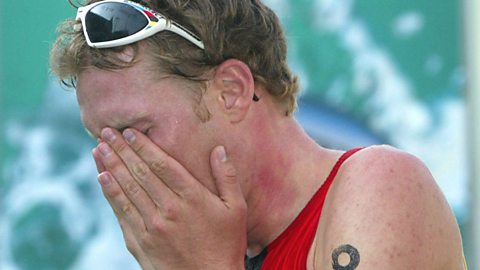The main functions of the cardiovascular system
An explanation of how the cardiovascular system works during exercise
The cardiovascular system has four main functions:
- transport and deliver oxygen, nutrients and hormones to the body
- remove waste products such as carbon dioxide and lactic acid
- protection against disease and infection
- maintain body temperature
Maintaining body temperature
In the heat, blood vessels close to the surface of the skin enlarge. This process is called vasodilationThe increase in diameter of the skin arterioles to increase blood flow and increase heat loss by radiation.. This allows more heat to be lost from the blood.
When a person takes part in exercise their face can become pink due to vasodilation of the blood vessels close to the skin's surface.

In the cold, blood vessels at the skin's surface close. This process is called vasoconstrictionThe narrowing of the skin arterioles to reduce blood flow and reduce heat loss by radiation. and takes blood away from the surface of the skin to help prevent it from losing heat.
Blood pressure
When the heart contracts it pushes blood into blood vessels which creates blood pressure.
A blood pressure reading consists of two values:
- systolic value – blood pressure while the heart is squeezing
- diastolic value – blood pressure while the heart is relaxing
The average blood pressure for an adult is 120/80 mmHg. The first number is the systolic value and the second number is the diastolic value.
Blood pressure is determined by Q (cardiac output) and the resistance to the blood flow (R). Resistance to blood flow is caused both by the diameter of the blood vessels and by the thickness of the blood. Furthermore, if a person has a condition called atherosclerosis (plaque in the arteries), their resistance to blood flow will increase and so will blood pressure. This can have serious health implications such as causing chronic high blood pressure, angina or even heart attack or stroke.
The heart's performance as a pump
The heart's function is to pump the blood and circulate it round the body. We assess the heart's performance by measuring how much blood it pumps out each minute. This is called cardiac output. To calculate cardiac output, we also need to know about heart rate and stroke volume.
Heart rate
Heart rate (HR) is the number of times the heart beats (or the ventricles pump blood out) in one minute. The average resting HR is approximately 70 beats per minute (bpm).
Stroke volume
Stroke volume (SV) is the amount of blood pumped out of the ventricles each time they contract. The average resting SV is approximately 70 ml.
Cardiac values
Cardiac output (Q) is the amount of blood pumped from the heart every minute and can be calculated by multiplying heart rate (HR) by stroke volume (SV).
The average resting HR is 70 bpm and the average resting SV is 70 ml, so the average resting Q is 4,900 ml or approximately 5 litres per minute.
During sport and physical activity, HR, SV and therefore Q, all increase to send more blood and oxygen to the working muscles.